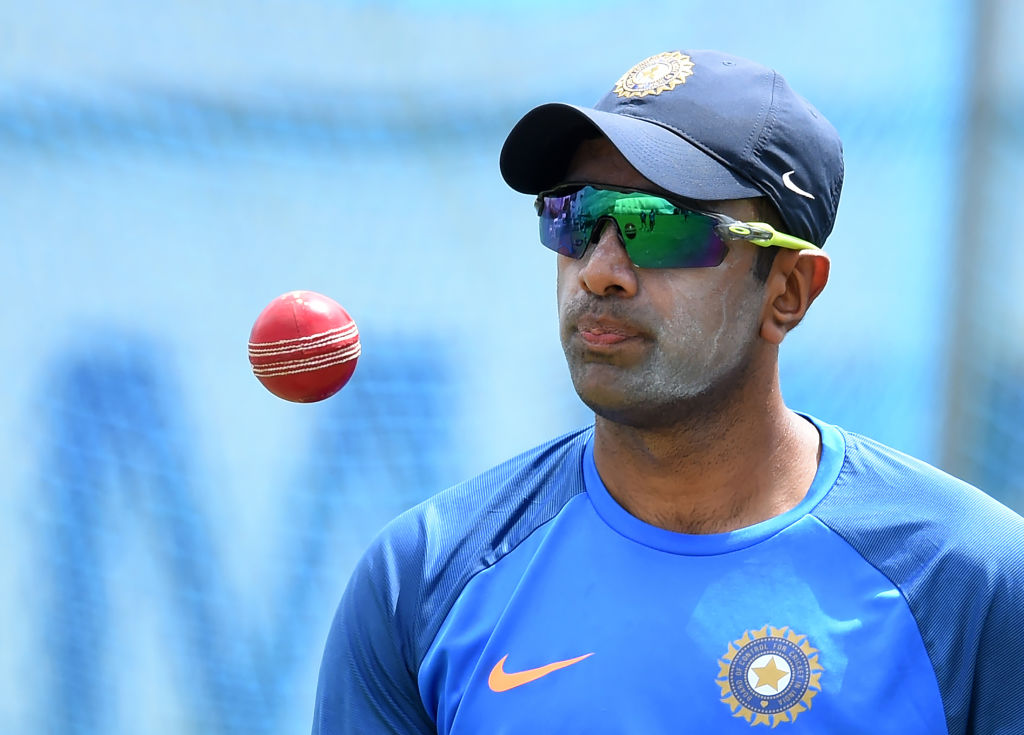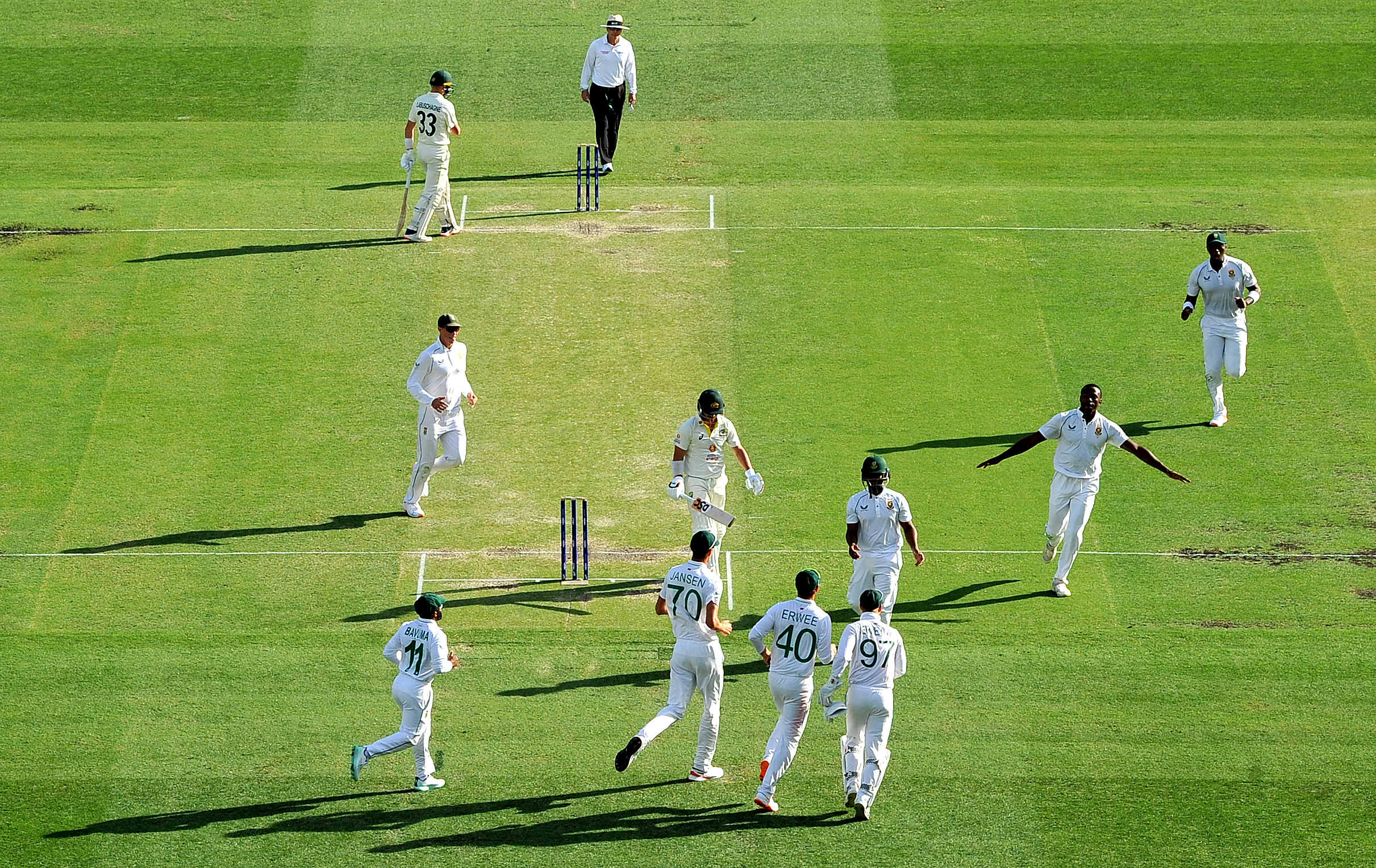It's not as if Australia didn't know it was coming, but the level of manipulation in pitch preparation for the first Test of the Border-Gavaskar trophy series in Nagpur appears to have hit a new height.
The first photos of the pitch were revealed on Wednesday during Australia's pre-match training session at the ground, and those pictures will alarm the touring party.
Australia - in their list of batsmen - carry a number of left-handers.
David Warner and Usman Khawaja at the top of the order, Travis Head, who will bat at number five, and Alex Carey, who will bat at number seven, are all left-handers, while back-up option Matt Renshaw, who is in a two-way race for the spot which was occupied by the injured Cameron Green, is also a left-hander.
So maybe it shouldn't have come as a surprise, but the groundstaff in Nagpur have worked as hard as possible seemingly to make the deck a nightmare for left-handed batsmen.
Interesting treatment of the pitch in Nagpur. The groundstaff watered the entire centre of the surface & only the length areas outside the left-hander’s leg stump & then rolled only the centre, stopping short every time they got to the good length areas at both ends #IndvAus pic.twitter.com/Myr2ZblqCg
— Bharat Sundaresan (@beastieboy07) February 7, 2023
While the pitch, in typical Indian fashion, is dry all the way up and down, the fact it resembles a patchwork quilt more than a cricket wicket should concern the ICC.
Let me make this very clear: There is nothing wrong with doctoring a pitch to suit the abilities of a home side.
Australia have done it for generations.
Touring team off low and slow wickets? Good, send them to the Gabba on a green top, then straight over to the WACA where we will bounce your lights out until you're 2-0 down and looking for any way to head back home.
Heading to England? Well, you better get ready for a green seamer which suits James Anderson and Stuart down to the ground with the dukes cricket ball which moves around corners.
They are but just two examples, and there is absolutely nothing wrong with India rolling out dry pitches that work in their favour, with batsmen who have been brought up on low, slow, turning wickets, and the best spin bowlers in the world, led by veteran Ravichandran Ashwin.
So dry is the wicket in Nagpur though, there is talk of Australia playing three spinners - something they have only done once in about the last century, during the second Test of the 2017 tour to Bangladesh - that, of course was the famous Test where the Tigers were able to upset the Aussies.
On that occasion, the loan pace bowler was Pat Cummins, and should Australia go the same way again in Nagpur, it will be Cummins again who is controlling a lone hand.
And if you thought three spinners was different, there is talk of India playing all four of their spinners in Ashwin, Ravindran Jadeja, Axar Patel and Kuldeep Yadav.
Of course, India have the advantage of Jadeja batting at seven that Australia don't.
But that isn't the point. Yes, the wicket is dry. The sky is also blue, grass is also green and social media will blow up when spin opens the bowling on Day 1. They are all certainties in life.
The point is that the pitch resembles a patchwork quilt, and, according to media at the ground, groundstaff have been seen actively ensuring that it will be so, rolling certain parts of the pitch, watering others and drying out the area where Ashwin and co will be bowling into loose cracks from Ball 1 against the Aussie left-handers.
And that - that might just be a little bit over the line.
Of course, the ICC have the ground assessment ranking which can dish out demerit points and ultimately suspend a ground from hosting Test cricket for 12 months.
The MCG in Australia was on a knife edge with that for a little while after the dire pitch it served up for the 2017-18 Ashes series - a game that never even made the fourth day.
But pitches can also be marked down for being too green, as the Gabba was against South Africa, or too conducive to spin bowling, as Nagpur might well be.
We won't make that judgement until we see it in action, however, it's a line in the ICC operation manual that should immediately cause for concern at the ICC.
Under the sanctions available to be handed down to venues, the ICC write:
"It is expected that venues that are allocated the responsibility of hosting a match will present the best possible pitch and outfield conditions for that match."
If groundstaff are actively abandoning certain areas of the pitch - and yes, it has been labelled doctoring, and no, I won't shy away from using that term - how can they possibly be even entertaining the idea of preparing the best possible pitch?
The answer, of course, is that they can't.
If the ICC's own manual is being broken in the preparation of the pitch, that it is not the 'best possible' pitch being prepared - even if that is to be a dry pitch due to the weather and soil in use - then how can the they stand idly by and not take action?
It's not the first time if they elect not to, and it certainly won't be the last, but the pitch report termed by the ICC's match referee at the conclusion of play in Nagpur will be extremely interesting, as will any further steps taken by the ICC.
Some have suggested the use of neutral groundsmen, which is a concept that will simply never happen given that is the nature of cricket - it's home and away, and you can't ask a groundsman to change countries.
In truth, there is no real 'quick fix', unless cricket boards are banned from any and all conversation with groundstaff, but that would be impossible to police, and would have more loopholes than you could point a stick at.
The opinions over this topic, much like the ever so controversial mankad, will vary on this forever and a day, and while the toss is going to be crucial in Nagpur, this pitch is going to turn form Ball 1, so it may not even make that much of a difference.
Like has been said, there is nothing wrong with setting up a pitch to suit your strengths, but this...
This might be just taking it a little bit too far.









